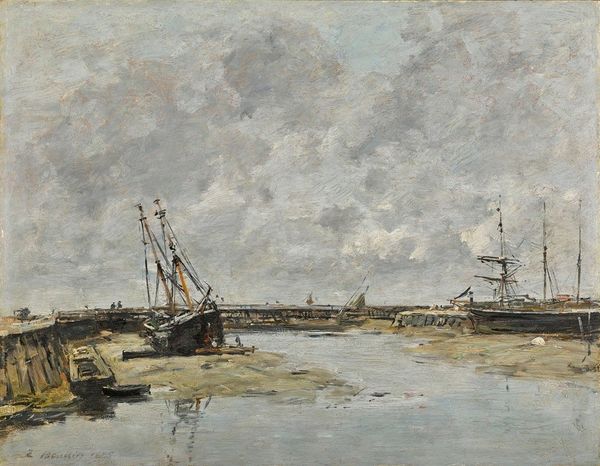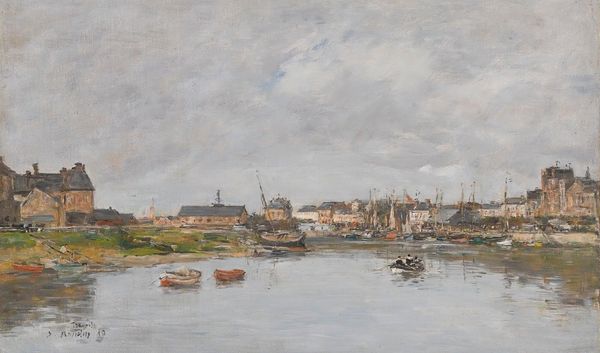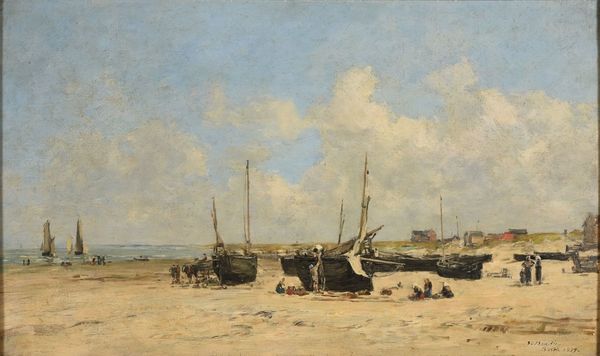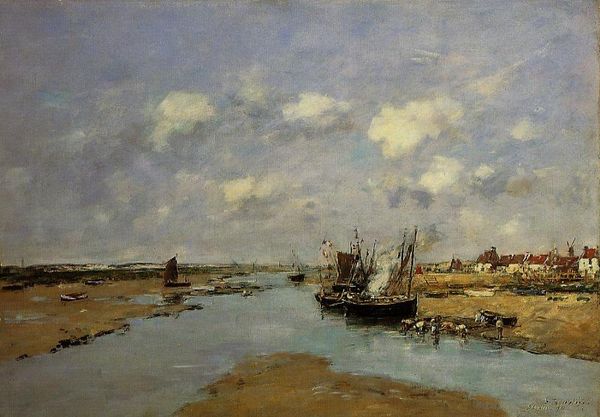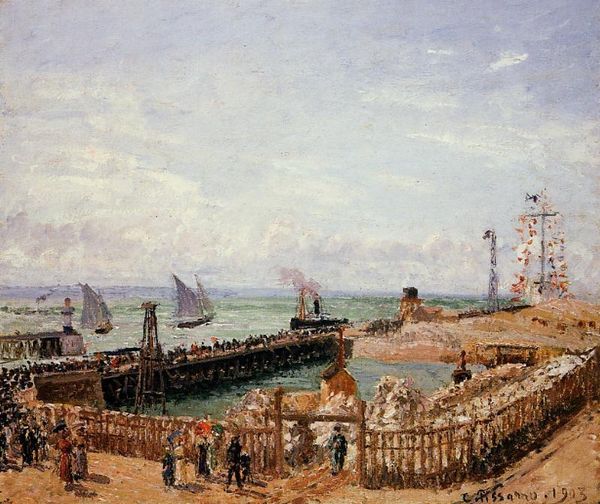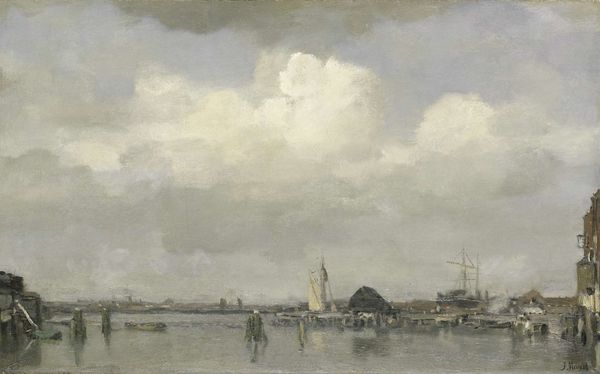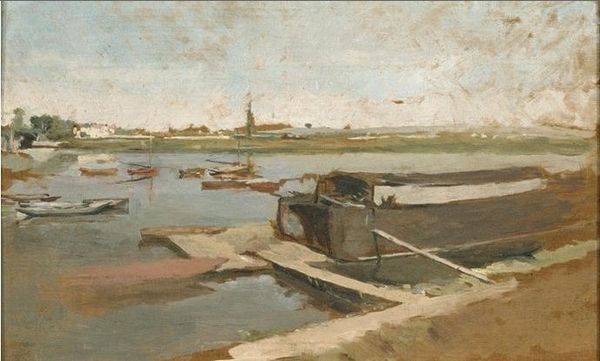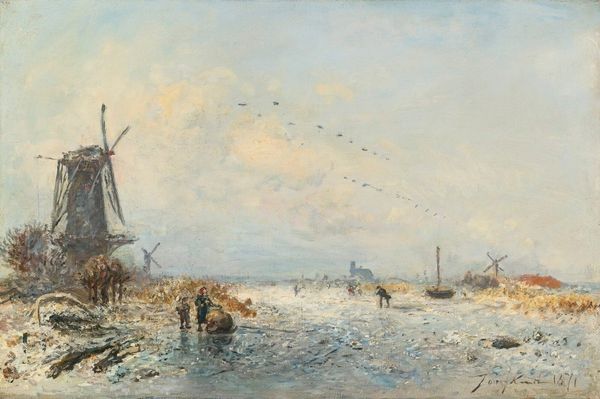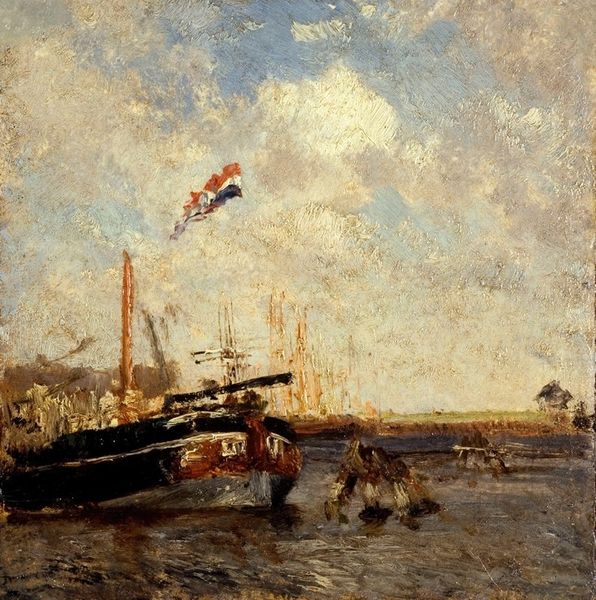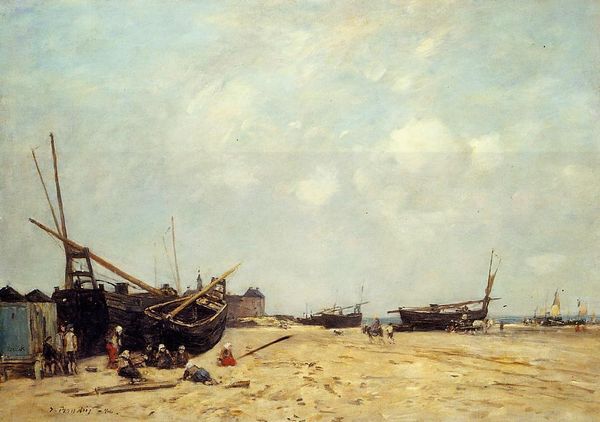
Copyright: Public Domain: Artvee
Curator: Here we have Johan Barthold Jongkind’s “View from the Quai d’Orsay,” an oil painting created en plein-air in 1854. It offers a glimpse into the industrializing landscape of mid-19th century Paris. Editor: My first thought is how grounded it feels, despite the expansive sky. There's a real weight to the composition, anchored by the working figures and the textures of the riverbank. Curator: Jongkind was instrumental in paving the way for the Impressionists. Look at how he captures the light reflecting on the Seine. It’s a stark contrast to the highly academic styles prevalent at the time. The way the light dances off the water prefigures Impressionistic techniques. Editor: Absolutely. But I’m also struck by what this scene reveals about labor at that time. The backbreaking work along the quai—evident in the postures of the workers and the presence of those mules—speaks to a social reality often glossed over in more idealized depictions of city life. Curator: A fair point. It's important to remember the social context: Paris was undergoing massive urban renewal projects under Haussmann, displacing many and fundamentally changing the urban fabric. These transformations were creating new jobs, though often at the cost of traditional trades. Jongkind is documenting a Paris in transition. Editor: The composition, even with that beautiful light, underscores that disruption. The massive crane dominates the center. It seems like a symbol of industrial ambition. Also, it’s worth noting that the focus is not on glorifying the city but capturing everyday activities—even the messiness. Curator: He creates a tension. There’s beauty in the light and the panoramic vista of the Seine, but it’s juxtaposed with the raw, unromantic reality of work on the docks. This perspective echoes Courbet’s Realism. He avoids glorifying labor. Editor: For me, it prompts reflection on the labor that literally built the Paris we celebrate today. How much of that effort went unseen? How were the laborers who did it impacted by the process? This work isn’t just aesthetically pleasing—it's historically charged. Curator: Reflecting on "View from the Quai d'Orsay" brings to mind art's ongoing ability to capture fleeting moments during monumental changes. Editor: And how critical it is to examine art within its time while recognizing its resonance with current struggles for labor, recognition, and fair distribution.
Comments
No comments
Be the first to comment and join the conversation on the ultimate creative platform.
